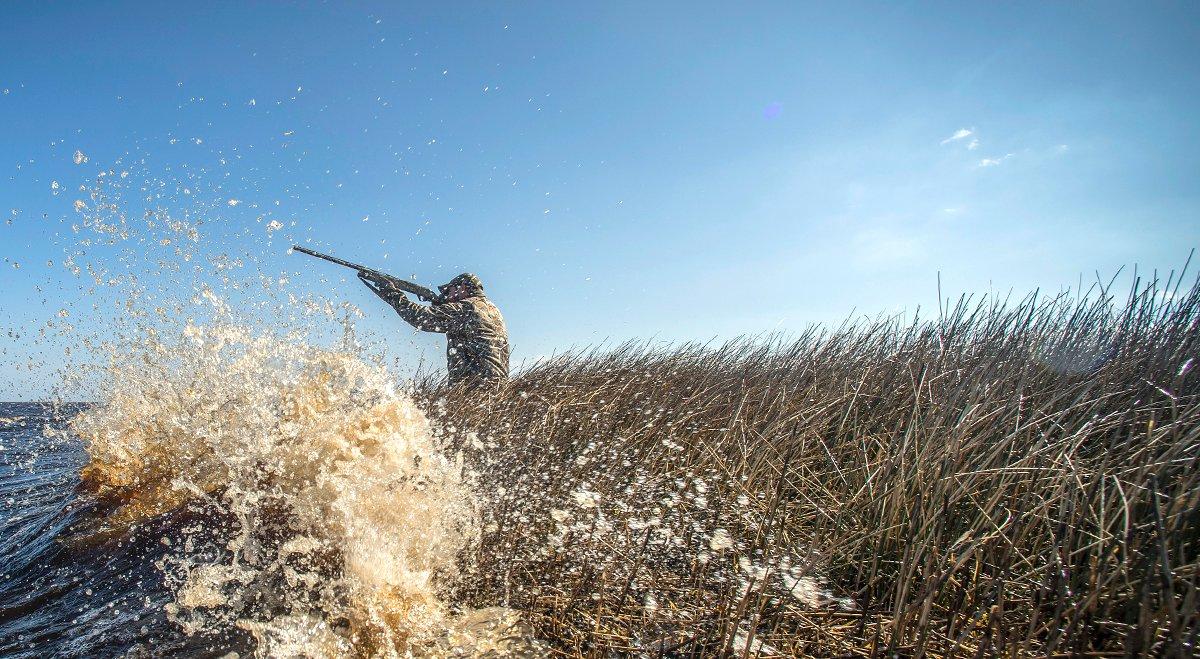Follow These Tips to Make Sure Shell No. 1 Connects Every Time
Most of us tote pumps or semi-autos to the marsh or pit, and for good reason. Those repeaters let us double or even triple on willing flocks but more often allow second and third chances when we whiff.
Backup shells come in mighty handy many days, of course, but they can also make us lazy. Really, waterfowlers should concentrate on making clean killing shots with their first shell. (Whatever happens afterward depends on the circumstances, but you cannot double or triple if you don't connect with round No. 1.)
Here are some ways to make that first shot count.
Pick the Best Shot
This sounds simple, yet we sometimes fail at this. One-shot kills are far easier when you identify the best opportunity. That's easy when you're hunting alone or only one bird decoys. The process becomes more complicated when two or more hunters prepare to cut into a flock.
First, don't worry about anyone else. You cannot control where their shots will fly. Identify a duck or goose that's in your zone of fire (the far right bird when you're on the right side of the blind, for example), and concentrate on it. However, keep an eye out for other possibilities, as your ideal target might flare hard when the guns go off, or another bird might switch positions with it in mid-air.
Envision the Shot
This goes hand in hand with No. 1. Anticipate how your ideal target will approach, set up and then behave at the moment of truth. Then visualize how you will react to and shoot at the bird.
Of course, even decoying birds don't always follow the playbook, and even seemingly easy shots can get crazy if your blind-mates shoot early. So, as mentioned, be ready to respond to whatever your target bird does, whether it lands, flares high or puts on the afterburners. That's basic wing-shooting. Still, we sometimes forget those fundamentals when the shot we expected morphs into a different target.
Take Your Time, if Possible
This is where most of us goof up, especially when hunting with a group. We're excited to capitalize on a good opportunity or a bit antsy because we anticipate that our buddies will shoot before we do, so we rush our first shot opportunity.
Slow down. Keep your wits, and take an extra split second to ensure that you're locked onto the best target and use sound shooting form. Resist temptation to snap-shoot at the bird (unless it's necessary for a quick-moving target), and don't worry about firing first. Just focus on your shot.
Read, React, Follow Through
Again, this is nothing more than basic wing-shooting advice (which is ironic, as I so often fall into bad habits while hunting). Focus hard on your target, let your hand-eye coordination dictate your mount and lead, and then follow through. And swing hard. That should be habit forged by round after round of skeet, trap or sporting clays in the off-season.
Worry About No. 2 (and 3) Later
We get greedy now and then and think about doubling or tripling before we have the first bird on the ground. Avoid this common pitfall, and concentrate on the best first shot. Sure, identify opportunities for doubles and triples, but keep those in the back of your mind until your initial round connects.
One Shot
Admittedly, you won't always succeed with your first shot. However, by focusing on making round No. 1 count, you'll increase your shooting percentage and open the door for multiple-bird opportunities. It all starts with one.
Click here for more Realtree waterfowl hunting content. And check us out on Facebook.







